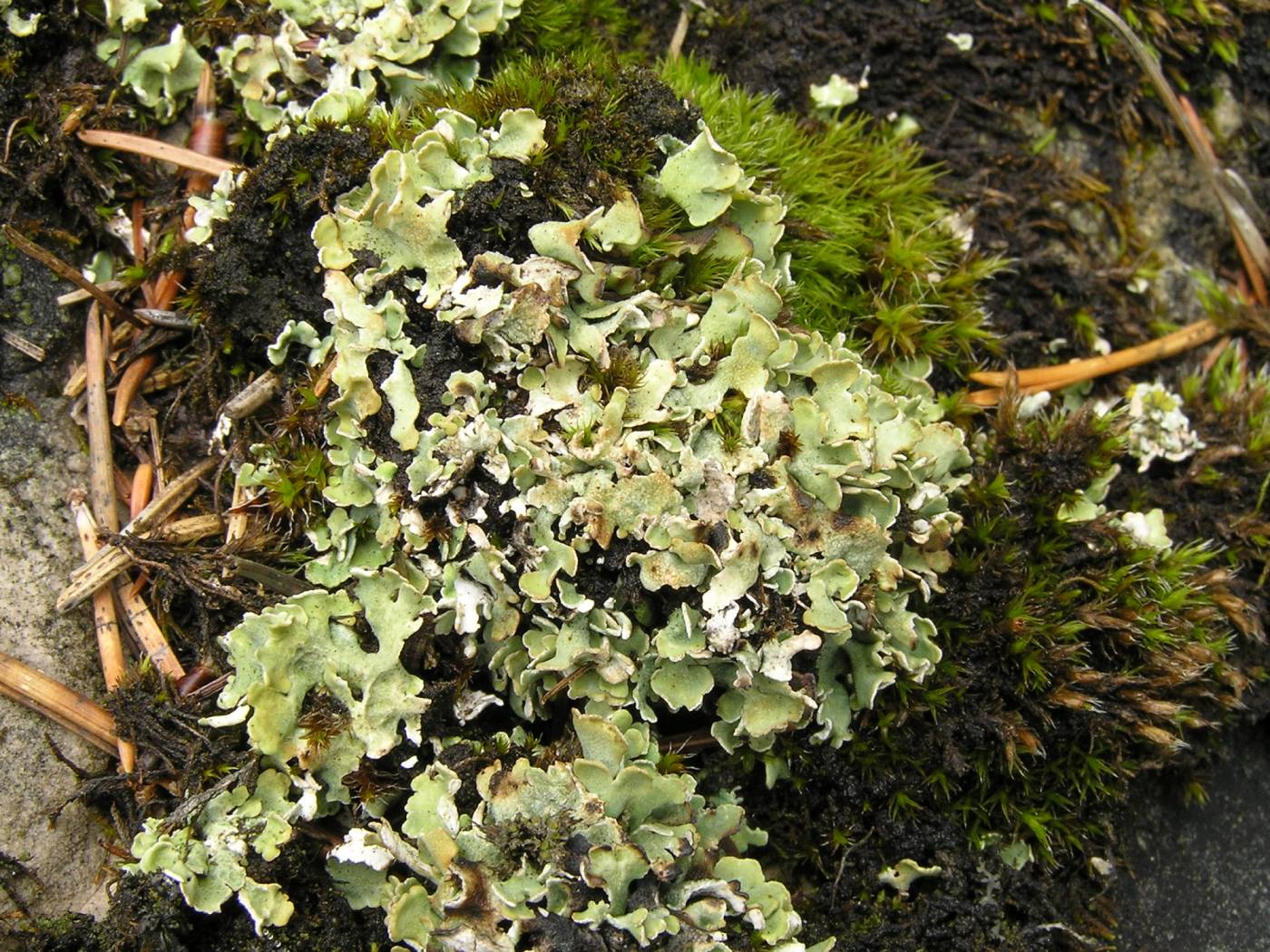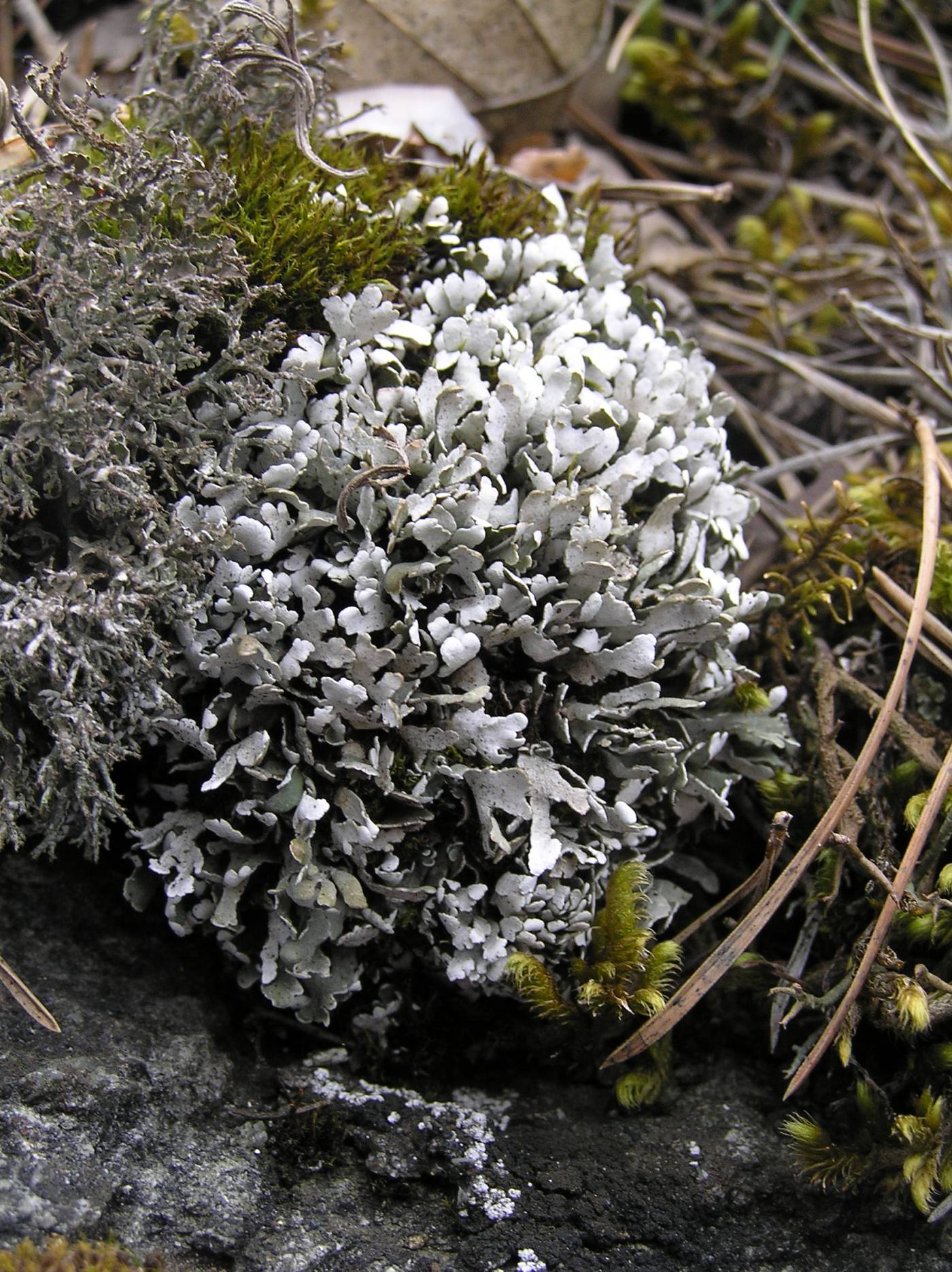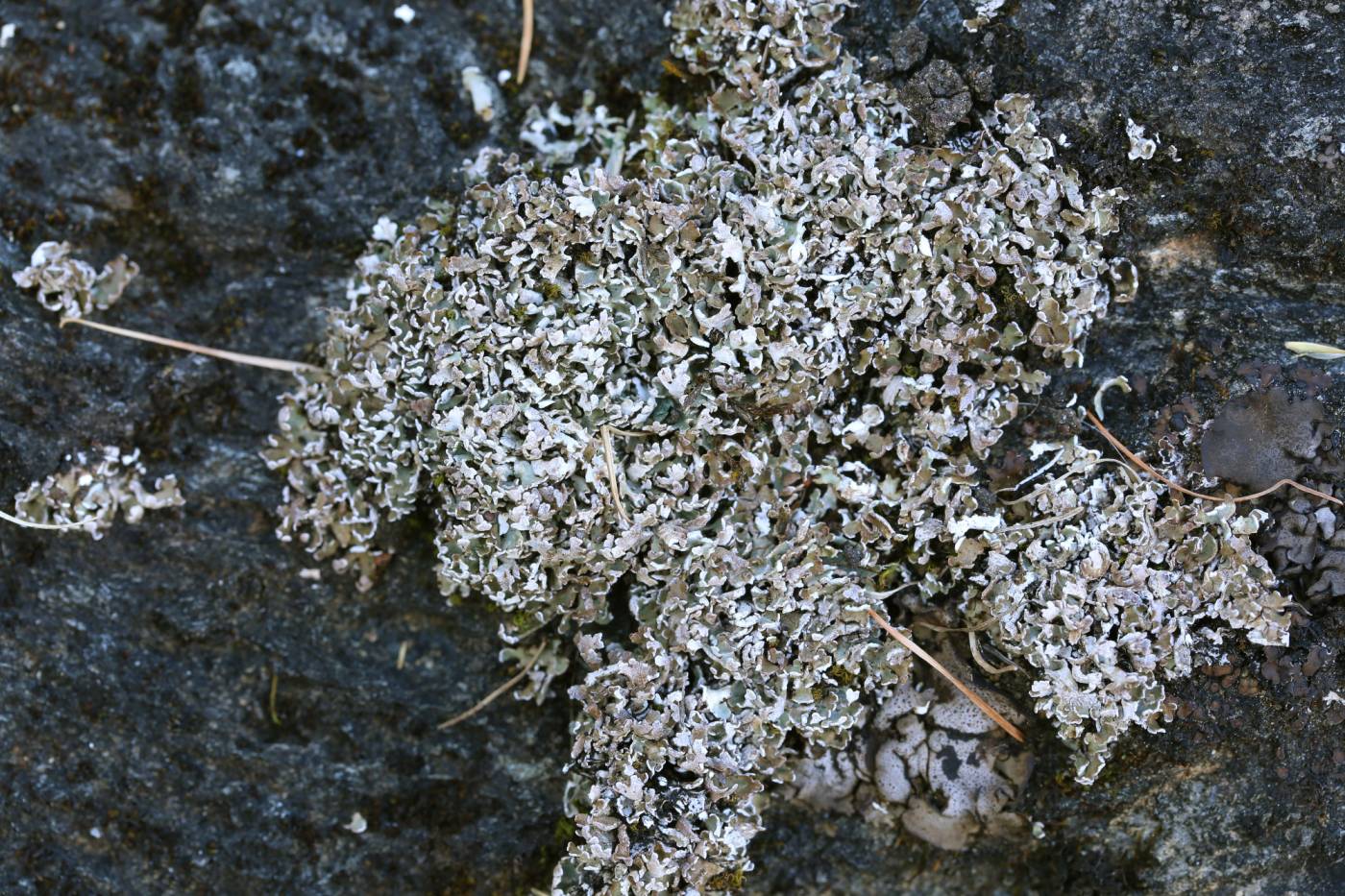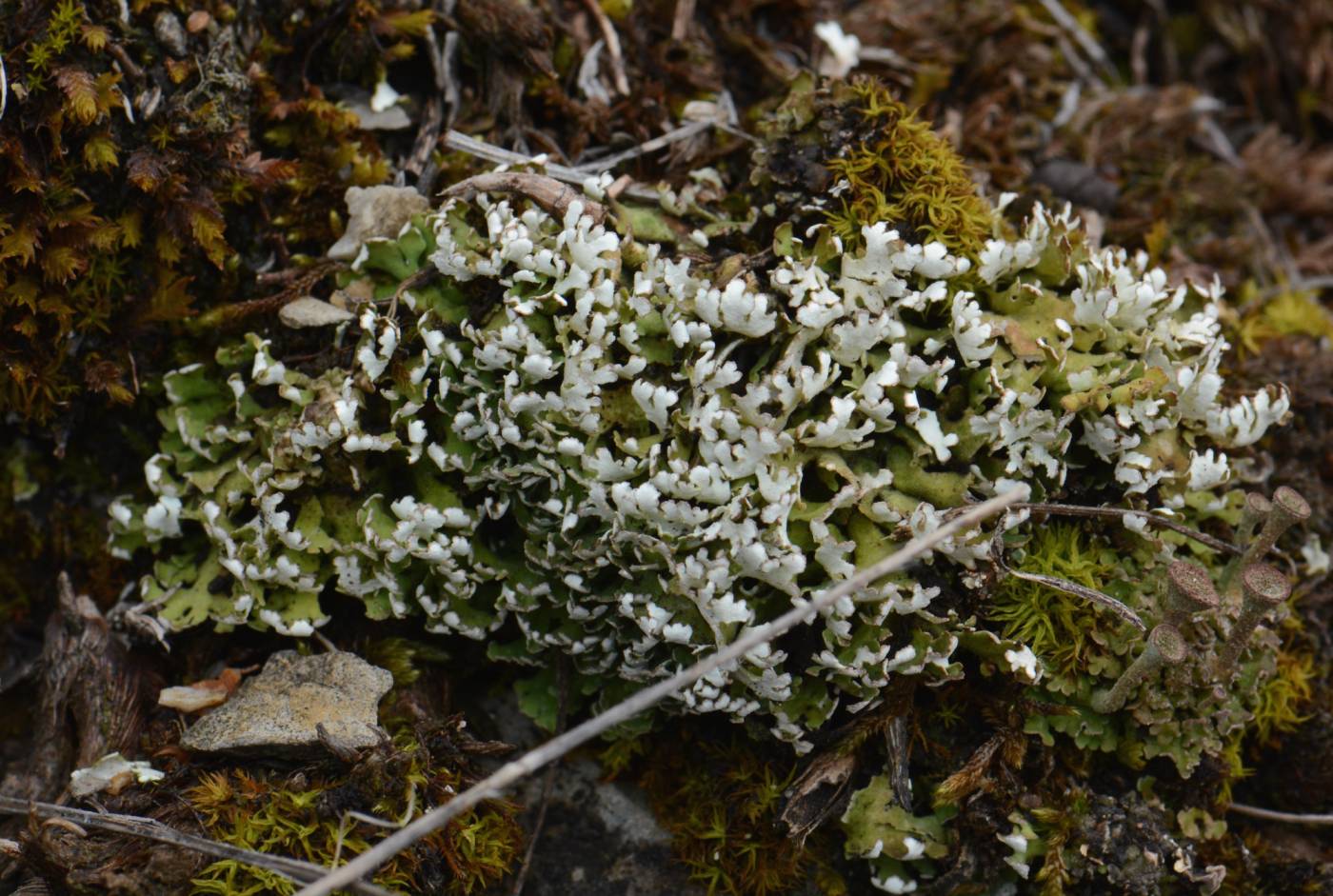Cladonia symphycarpa has conspicuous primary squamules while podetia are usually absent. Chemically, it is very variable. In the Czech Republic, the chemotype with atranorin and norstictic acid (Pd+ yellow, K+ yellow to red) is dominant, and is often used as a standard for TLC. The chemotype with psoromic acid (Pd+ yellow, K+ yellow) is rarer. More chemotypes occur in Europe. Its chemical and morphological variability partly overlaps with the variability of C. cariosa, which usually has smaller primary squamules and different podetia.
It is among the dominant Cladonia species on calcareous substrates, where it mainly grows on soil, but also on bryophytes, rocks or within grasslands. It prefers natural to semi-natural habitats (e.g., old quarries), but there are also records from concrete, etc. In the European karst areas, it is a common species from lowlands to mountains. Likewise, in the Czech Republic, it is absent outside of karst areas, with the exception of serpentinite, diabase and other calcium-enriched substrates.
Literature: Osyczka P. & Skubała K. (2011): Chemical races of Cladonia cariosa and C. symphycarpa (lichenized Ascomycota) – a Polish case study in a worldwide context. – Nova Hedwigia 93: 363–373.
taxonomic classification:Ascomycota → Lecanoromycetes → Lecanorales → Cladoniaceae → Cladonia
Red List (Liška & Palice 2010):VU – vulnerable
Occurrence in the Czech Republic
All records: 269, confirmed 83. One click on a selected square displays particular record(s), including their source(s).



